Early summer in the kitchen garden, weeds, bees and strawberries
My kitchen garden is a riot of colour at the moment, so its time for an explore, plus some research on bees, strawberries and grey mould
🌱 I'm Sally Morgan, an organic gardener and botanist who loves to experiment. Here you can read about matters relating to climate change, sustainability, organic gardening, growing veg and biodiversity, helping you to become a
climate savvy gardener 🌱☀️🌧️❄️🌡️
We are fast approaching midsummer and its that time of year when I start to panic - have I sown enough beetroots and carrots? do I need more sweet corn? have I got replacements in case the slugs eat the dahlias and the cosmos? You know the feeling I’m sure! I need to remember that there is still time ….. time enough to resow the baby parsnips that the baby rabbit scuffed up the other night! Urrgh!
This week my focus is on the small vegetable garden that I created in autumn 2022. It’s around 20m by 10m wide, rather similar in area to a half allotment plot, with a small greenhouse and composting area. There is a high stone wall on one side with a north facing aspect and a low stone wall on the opposite side. I’ve planted an espalier pear on the high wall, a cultivar that can cope with northerly aspect, and fan trained soft fruits along the low wall. There are three long beds running down much of the plot, each just over a metre in width, with narrow bark paths between them. You can see the beds and the extent of the space in the photo below which was taken two years when it had only just been established.

The plot is in the sun for much of the day at this time of year, but the end is overshadowed by trees and this creates a wide range of conditions, while the soil is heavy clay and laden with weed seeds and stubborn roots from the time when it was covered by bindweed, nettles and brambles. Two years under plastic sheeting solved most of the weed issues, but I still get bindweed and brambles popping up.
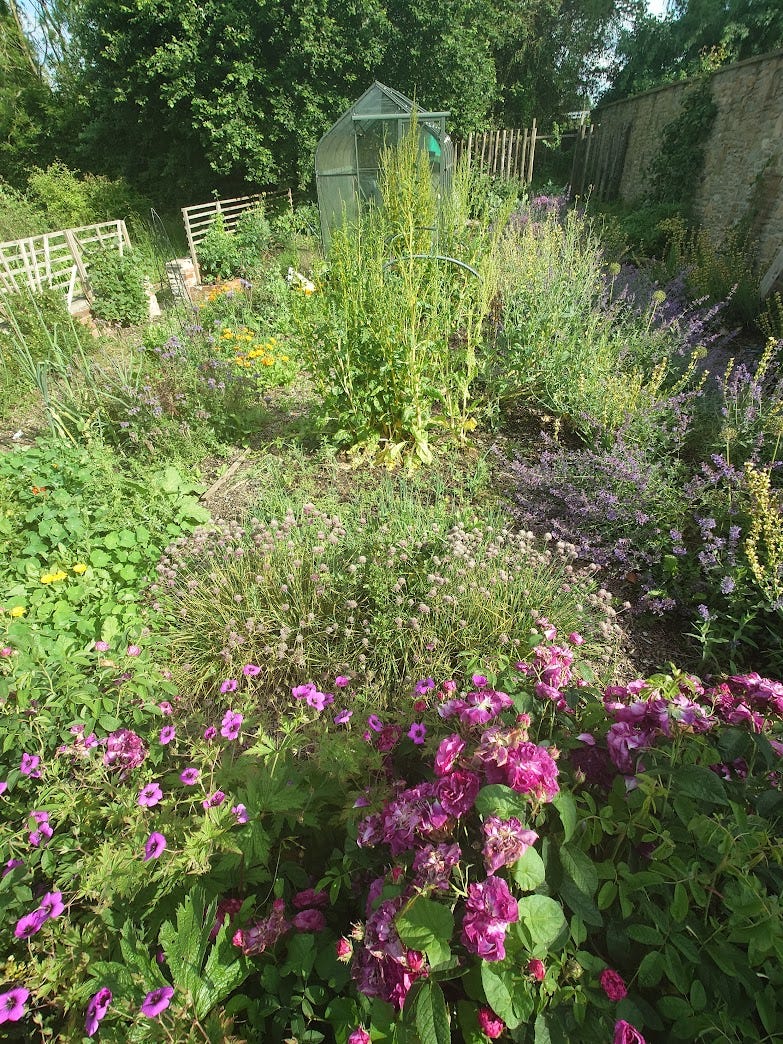
Colour, colour. colour
It might be early in the season for veg, but its a riot of colour and a buzz with bees as a result of all the flowers I have either planted or which have self seeded - roses, geraniums, nepeta, sisyrinchiums, alliums, pot marigolds, borage, nasturtiums, plus all the flowers of low creeping ‘wild flowers’ that many might call weeds (scarlet pimpernel, speedwells, chickweed, ground ivy, self heal, red dead nettle and more).

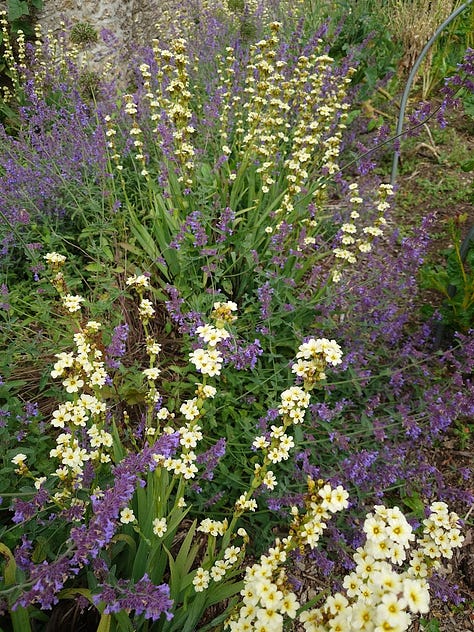
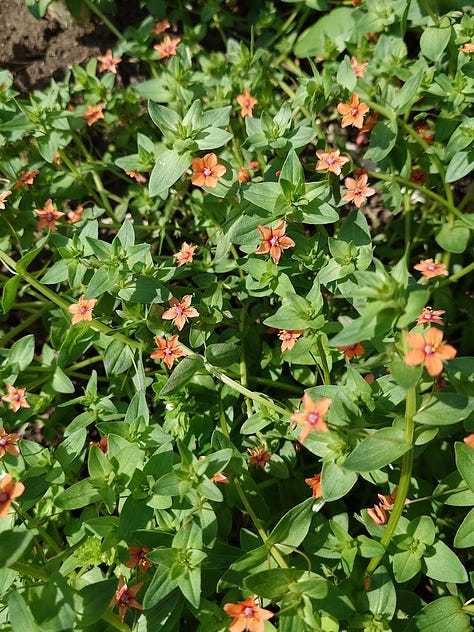


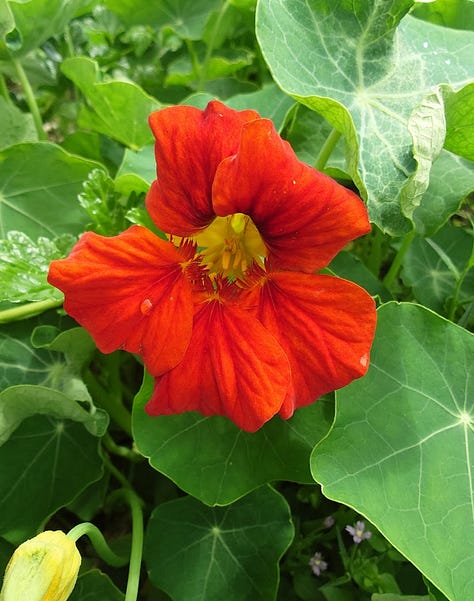

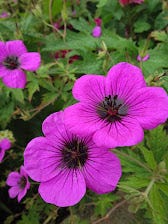
I did a floral diversity count on the plot yesterday and I reached 29 different flowers, which isn’t bad for a veg garden. As well as the flowers already mentioned, there were flowers on the early potatoes, blackberries, sweet peas, plus lots of other ‘wild’ flowers.
A living mulch
I’ve written about this form of mulching before - the use of living plants to cover, protect and feed the soil. As you can see in the photo, the scarlet pimpernel and the speedwells are creating a living mulch over the soil between and around my onions. I will have to keep an eye on them as I don’t want them competing with the crop, but its fine for now, and I think it looks lovely.
The vagaries of self sown
It’s funny how self seeding varies year to year. A couple of years ago, I barely had a borage, nasturtium or pot marigold seedling in the garden and I had to sow seed. This year there are self sown seedlings everywhere. Much as I love them, I am going to have to brace myself and pull up some seedlings, otherwise there will be no space to grow any crops!
Strawberry time
There are strawberries around the garden. I have some planted in three half drums and I have actually managed to harvest several bowls worth of fruits, although most mornings when I gather the ripe fruits, I have to contend with a female blackbird darting around my feet for the ones I have tossed out – yes, literally around my feet. She is getting so brazen. The other day she was hanging on my young saskatoon shrub picking off the berries and I had to all but push her off, so determined was she to get the last fruits. She has a bed of berries all to herself in the main kitchen garden as I haven’t gotten around to netting yet, and there are more feral strawberries growing along the paths, also without protection, so it would be nice if she would leave a few for us, or may be she has friends.
But my reason for mentioning strawberries wasn’t to recount stories about the blackbird, much as I love her, but to highlight the importance of bees to the strawberry crop. A press release popped into my inbox a few weeks ago about farmers using bees to control grey mould on their strawberry crops.
Grey mould (Botrytis cinerea) is a major problem on many field crops, especially strawberries. The mould is an opportunistic species and it spreads quickly in humid, cloudy weather especially when temperatures are below 20C.
Many conventional farmers spray their crop with fungicides which are not only costly, but they have to be used several times, often damaging the flowers as well as leaving a residue, and of course, the mould is very good at developing a resistance to the various chemicals.
A while ago, there were trials in Estonian of a biological fungicide that contained the spores and mycelium of a naturally occurring soil fungus (Gliocladium catenulatum) that was known to compete with the grey mould, reducing the incidence of the disease. The vector of the biological fungicide was the honey bee. Hives were placed around the fields and a special dispenser at the entrance dispersed a powder containing the biological fungicide which the bees had to walk through. The bees carried the powder to the flowers where it was dislodged as they carried out their job of pollination. The biological fungicide was found to remain active for up to 5 weeks, long enough to protect the crop. An added bonus was that the presence of so many bees around the crop gave better pollination, leading to higher yields of better quality.
Now this approach is being offered to fruit farmers in the UK with a company providing farmers with bees and hives fitted with the specially adapted dispenser tray at the opening.
And that’s not all on the research front. In 2019, research found that wild bees were more effective pollinators than honey bees. In fact, wild bees would choose strawberries in preference to other flowering crops, such as oilseed rape. So, there is this balancing act, if farmers bring in hives of honey bees to control the mould, they may displace wild bees and the result could be poorer yields. So management methods to enhance wild bee populations could be more cost effective approach. Its all very complex as you would expect from natural systems.
Happy gardening
PS If you enjoyed reading this post, please click the ‘like’ button at the bottom, it really helps make my posts more visible on the SubStack app. Thank you xxx
Talks in 2025
1 July Sherston, near Malmesbury
9 July Bramzero, Calne
21 July Bride Valley near Dorchester
1 September Wootton Bassett
2 September Marshfield
4 September Dilton
18-20 September I will be at Yeo Valley on 18 and 19 Sept. Do come along. There is a huge line up of speakers, Yeo Valley Organic Garden Festival
2 October Ringwood
9 October Seavington
10 October Box Garden Club near Chippenham
11-12 October Bury St Edmunds Literary Festival I am teaming up with Becky Searle (IG sowmuchmore) to give a talk and run a workshop on Boosting biodiversity in the garden. Come along and join us! Programme here
13 October Rode, nr Frome


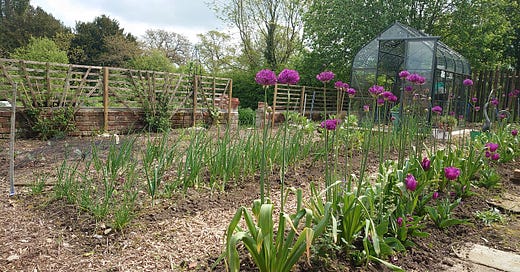




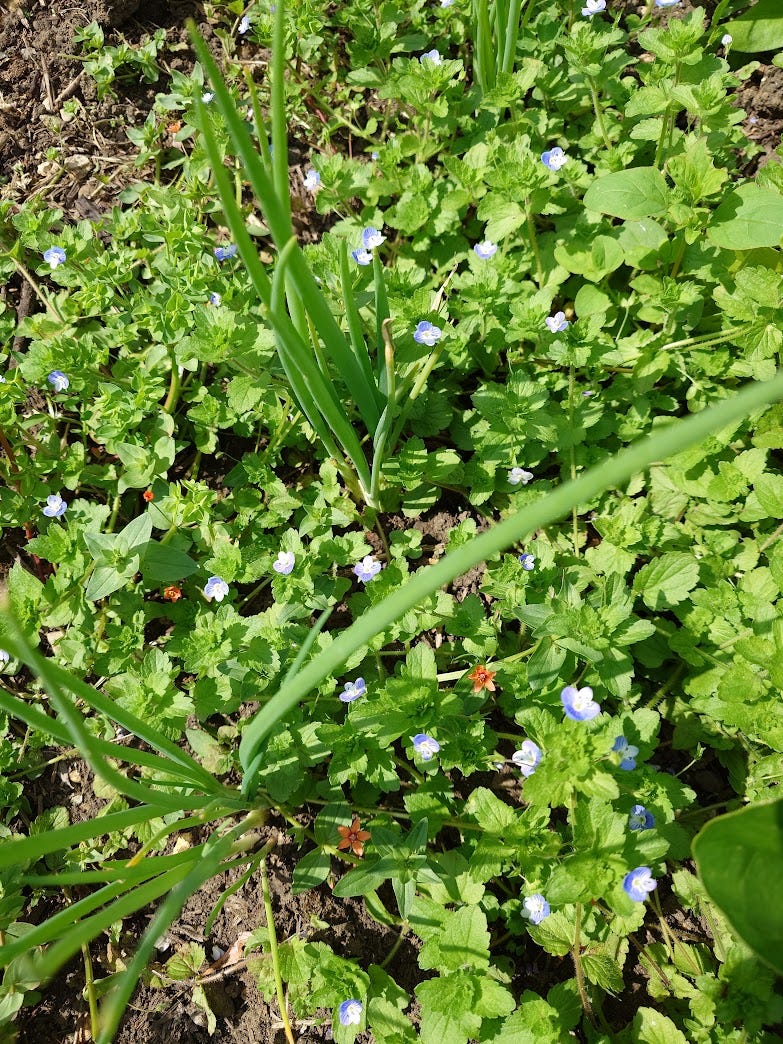

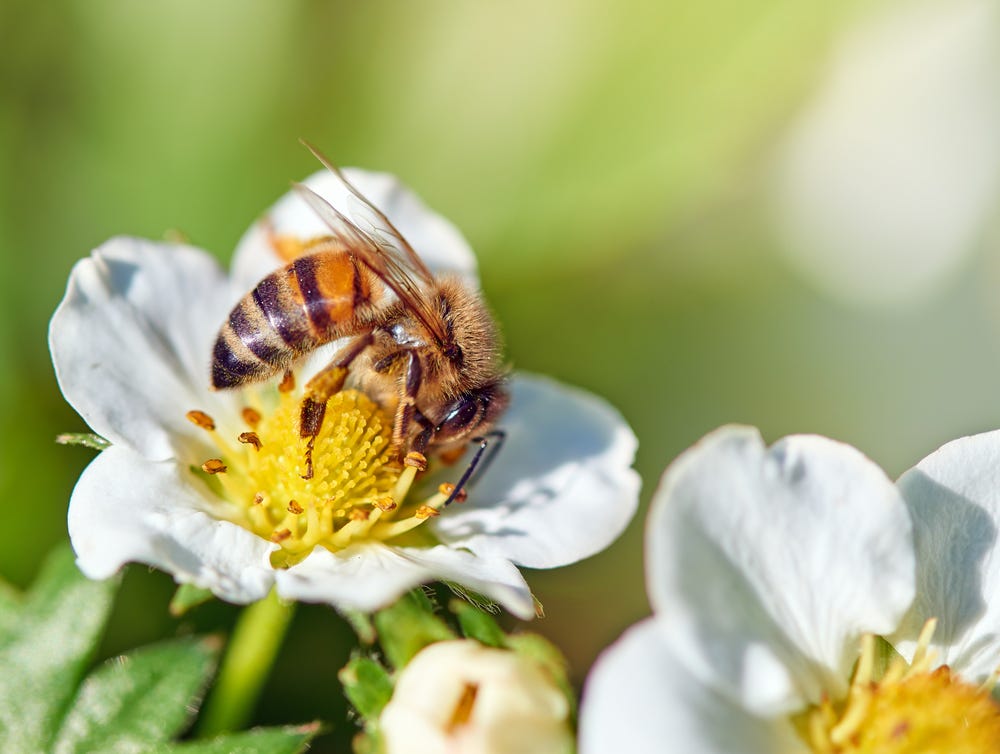

Very nice read, Sally! I love your style of gardening 🐝
Lovely looking plot. Hopefully mine will be half as abundant once it settles in.
Interesting about the wild bees Vs honey bees, that might be why we are getting bigger strawberry yields this year as there are far fewer honey bees in our garden compared to previous years.